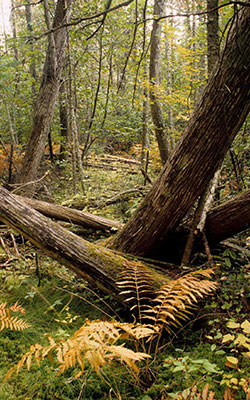Upper Chippewa Conifer-Hardwood Forest

Site Description
This vast area, on the Chequamegon-Nicolet National Forest, lies near the headwaters of the Chippewa River and several tributaries. It is a high, relatively flat ground moraine containing large poorly drained areas with higher ridges between the parallel trending forest wetlands. A characteristic feature of this area is extensive tracts of old-growth conifer wetlands, the majority located in low-lying areas between ridges and along southwest flowing streams. The uplands are forested in aspen, maple, and white birch, with scattered pockets of old-growth hemlock and white pine. Alder thickets, open bog, muskeg, and small patches of old red pine forest, floodplain forest, and upland openings also are present.
Ornithological Importance
This site supports a multitude of priority species at high densities in both the wetlands and uplands. Notable are exceptional numbers of conifer-loving species such as black-backed woodpecker, olive-sided flycatcher, Nashville warbler, Blackburnian warbler, Cape May warbler, and pine warbler. A variety of wetland, shrub, and muskeg species such as American bittern, golden-winged warbler, mourning warbler, boreal chickadee, gray jay, and boreal finches such as purple finch, white-winged crossbill, and red crossbill also are found in high numbers.
Photo Credit: Thomas Meyer
